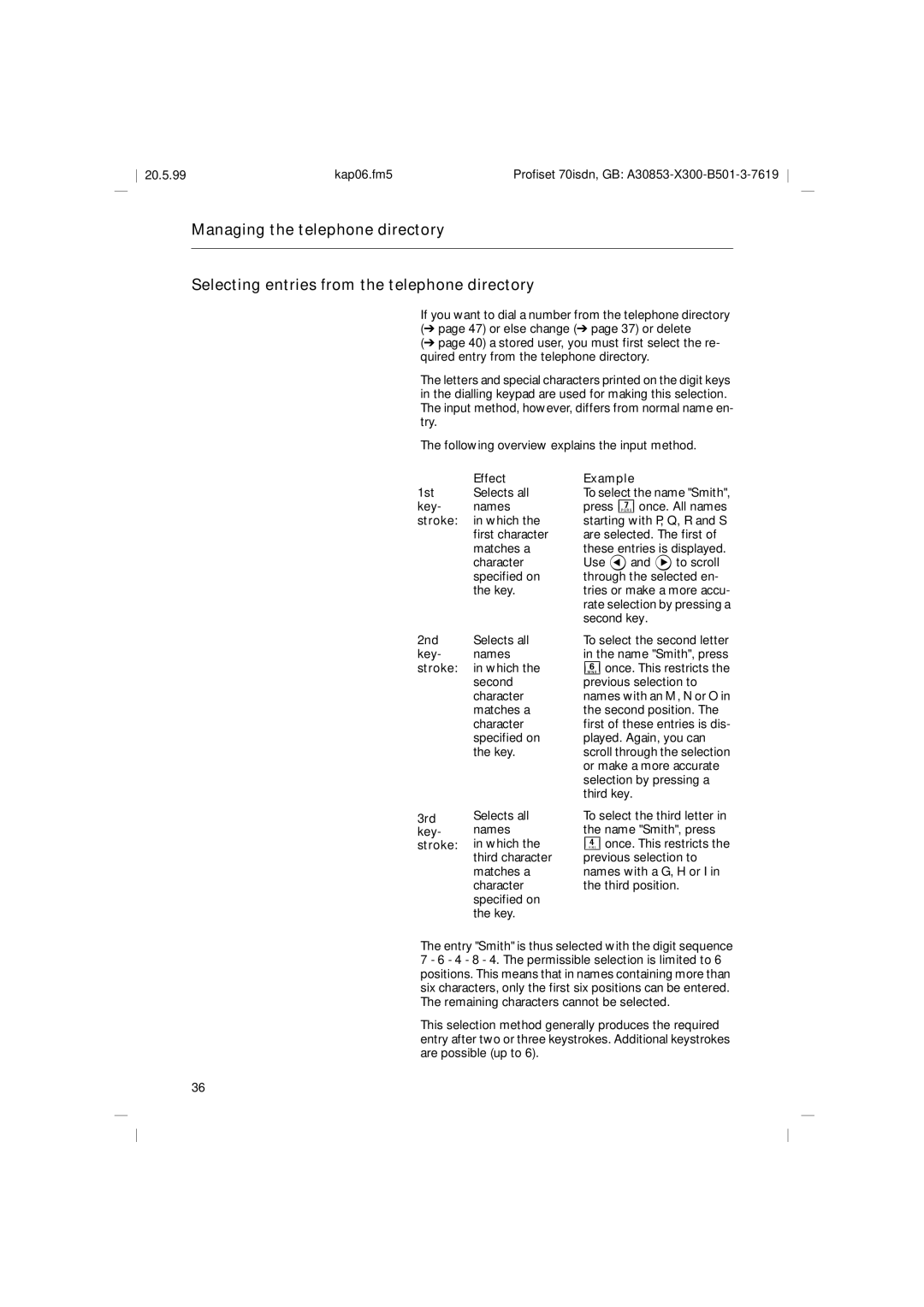
20.5.99 | kap06.fm5 | Profiset 70isdn, GB: |
Managing the telephone directory
Selecting entries from the telephone directory
If you want to dial a number from the telephone directory (➔ page 47) or else change (➔ page 37) or delete
(➔ page 40) a stored user, you must first select the re- quired entry from the telephone directory.
The letters and special characters printed on the digit keys in the dialling keypad are used for making this selection. The input method, however, differs from normal name en- try.
The following overview explains the input method.
1st | Effect | Example |
Selects all | To select the name "Smith", | |
key- | names | press 7 once. All names |
stroke: | in which the | starting with P, Q, R and S |
| first character | are selected. The first of |
| matches a | these entries is displayed. |
| character | Use < and > to scroll |
| specified on | through the selected en- |
| the key. | tries or make a more accu- |
|
| rate selection by pressing a |
|
| second key. |
2nd | Selects all | To select the second letter |
key- | names | in the name "Smith", press |
stroke: | in which the | 6once. This restricts the |
| second | previous selection to |
| character | names with an M, N or O in |
| matches a | the second position. The |
| character | first of these entries is dis- |
| specified on | played. Again, you can |
| the key. | scroll through the selection |
|
| or make a more accurate |
|
| selection by pressing a |
|
| third key. |
3rd | Selects all | To select the third letter in |
key- | names | the name "Smith", press |
stroke: | in which the | 4once. This restricts the |
| third character | previous selection to |
| matches a | names with a G, H or I in |
| character | the third position. |
| specified on |
|
| the key. |
|
The entry "Smith" is thus selected with the digit sequence 7 - 6 - 4 - 8 - 4. The permissible selection is limited to 6 positions. This means that in names containing more than six characters, only the first six positions can be entered. The remaining characters cannot be selected.
This selection method generally produces the required entry after two or three keystrokes. Additional keystrokes are possible (up to 6).
36
